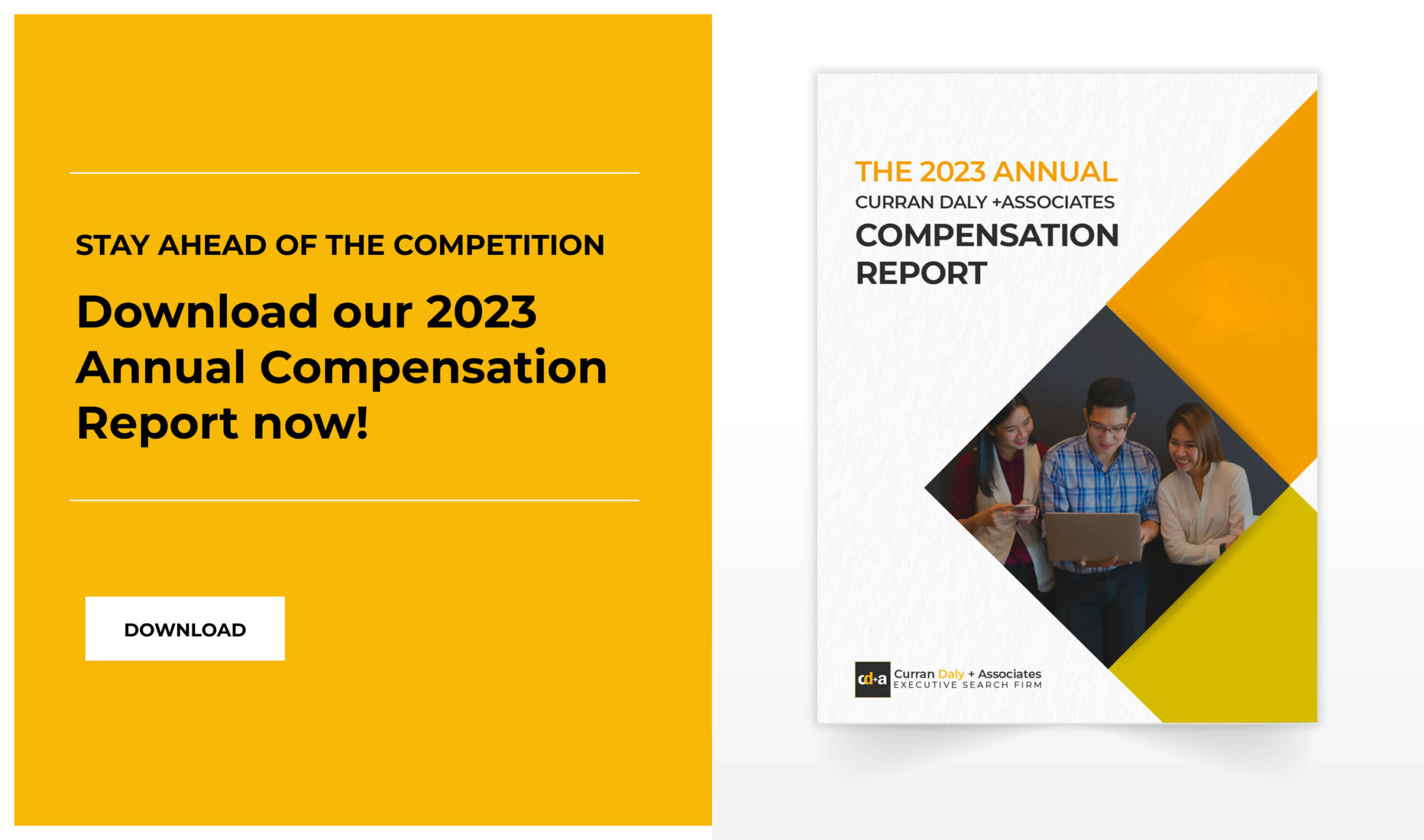- The evolving work landscape is shaped by technology, remote work, the gig economy, and flexible arrangements, necessitating workers to adapt, acquire skills, and embrace flexibility to thrive.
- The evolving work landscape impacts executive compensation through performance-based pay, skills-based compensation, flexible compensation structures for remote work, and the potential for increased income inequality and wage gaps.
- Understanding the impact of changes in work on executive compensation is crucial for attracting and retaining top talent, motivating performance, adapting to changing workforce dynamics, mitigating risks, and aligning compensation with organizational strategy in the evolving business landscape.
- Designing an executive compensation plan involves determining target amounts for each component, including direct compensation, annual incentives, long-term incentives, perquisites or benefits plans, and retirement packages, while considering industry trends, performance-based pay, and regulatory compliance.
In today’s rapidly evolving business landscape, executives face the profound impact of technological advancements, changing demographics, and evolving workforce dynamics.
The future of work, with its implications for executive roles and compensation, must be addressed. As automation, AI, and globalization reshape industries, executives must navigate complex opportunities and challenges to lead their organizations effectively.
In this article, we explore the impact of workplace changes on compensation structures, focusing on executive perspectives. Leaders can proactively address their organization’s and employees’ needs by identifying upcoming trends and influential factors affecting the workforce.
This approach helps them stay competitive and adaptable in the face of change. Technological advancements offer exciting possibilities, enhancing operational efficiency, streamlining processes, and driving innovation.
Executives must leverage these opportunities to gain a competitive edge.
However, challenges arise from job displacement and changing skill requirements. Executives must balance technology and workforce engagement, fostering a culture of continuous learning and promoting reskilling initiatives.
Compensation is crucial and must evolve as organizations adapt to market dynamics. Executives need innovative approaches such as performance-based incentives, equity participation, and flexible benefits to attract top talent.
The changing nature of work, including remote and flexible arrangements, necessitates reevaluating compensation models. Executives must explore new frameworks aligning compensation with outcomes and leadership in virtual or hybrid environments.
What is Executive Compensation?
Executive compensation refers to the combined salary, benefits, and bonuses offered by a company to executives and top management positions in exchange for their work.
These compensation plans can include financial elements like stocks and bonuses and nonfinancial components such as insurance plans and paid time off. They often serve as incentives for performance and may be tied to specific objectives.
The federal government requires public companies to disclose executive compensation details, including how these figures are calculated. Some states also have laws regarding executive compensation plans, although the specific guidelines can vary. Positions typically receive executive compensation, including company presidents, vice presidents, and C-suite positions, such as the chief financial officer and executive officer.
The Changing Nature of Work
The nature of work is constantly changing and evolving, with new technologies, economic trends, and changes in the labor market leading to unique opportunities and challenges for workers.
From automation to remote working, these changes are transforming how people approach their daily jobs and creating a shift in the skills needed to succeed.
Technological Advancements and Automation
Technological advancements and automation have brought numerous benefits to the workplace, including increased efficiency, cost reduction, enhanced precision, and improved workplace safety.
However, there are challenges, such as job displacement and the need for skill shifts.
Workers must adapt to new roles and acquire relevant skills to remain competitive. It is important to address ethical considerations and establish guidelines for responsible technology use.
Collaborative work between humans and machines is becoming increasingly common, and automation impacts industries differently.
By understanding these aspects, organizations can navigate the future of work effectively and harness the full potential of technological advancements.
Related Link: The Future is Here: How Artificial Intelligence Transforms Executive Search
Rise of Remote Work and Distributed Teams
The rise of remote work and distributed teams is a significant shift in how work is organized and executed.
Enabled by technology and connectivity, employees now have the flexibility to work from locations outside of a central office.
In 2023, many companies are experiencing an increase in full-time employees working remotely, with 54% reporting this trend. Companies are expanding their remote workforce both within the country and internationally.
Remote work offers benefits such as increased autonomy and work-life balance for employees, while organizations can access a wider talent pool, increase productivity, and reduce overhead costs.
Hiring a distributed team is a beneficial long-term investment, as 69% of people in such teams report increased employee retention.
Despite debates about the success of remote work, the actual impact has been positive within distributed teams.
Employees are likelier to stay with the company, leading organizations to adapt their hiring strategies accordingly.
Distributed teams bring diverse perspectives and foster collaboration and innovation across different locations or time zones.
Moreover, distributed teams attract better candidates, as reported by 60% of decision-makers who have adopted a distributed remote workforce model.
Companies have found that expanding their hiring reach increases applicants’ quantity and quality. This results in assembling stronger teams, leading to a more robust business overall.
The COVID-19 pandemic has accelerated the adoption of remote work, with many organizations considering hybrid work models for the future.
The Gig Economy and Flexible Work Arrangements
The gig economy and flexible work arrangements have gained significant prominence in today’s work landscape due to technological advancements, evolving work attitudes, and the desire for greater autonomy and work-life balance.
The gig economy involves short-term, freelance, or on-demand work, where individuals work as independent contractors or temporary workers on specific tasks or projects.
This allows them to have more control over their work, choose their schedule and location, and take on multiple projects simultaneously.
Flexible work arrangements encompass various setups, including remote work, part-time work, flexible hours, compressed workweeks, job sharing, and freelance or contract work.
These arrangements give employees more flexibility in managing their time, location, and schedule, enabling them to achieve a better work-life balance and meet their commitments.
Related Link: Hybrid Work is Here to Stay: What It Means for Businesses in 2023
How Do These Changes in Work Affect Your Executive Compensation?
The changing face of work is having a trickle-down effect on executive compensation.
Organizations seek new ways to incentivize talent and keep their competitive edge as global markets evolve.
This means that executives must stay on top of the latest trends in compensation and be prepared for potential changes to their own salary packages.
Shift Towards Performance-based Pay and Outcome-driven Metrics
Profitability measures, revenue, and sales are the most commonly used metrics in disclosed compensation plans, according to CGLytics data.
However, these financial metrics may only capture some criteria for determining payouts, leading to a potential gap in evaluating success.
To address this, remuneration committees can incorporate more holistic measures of success, including stakeholder interests and environmental, social, and governance (ESG) factors.
Companies add new metrics such as cash flow, earnings before interest, taxes, depreciation, amortization, and strategic key performance indicators to their incentive plans.
Some companies have also reduced target or maximum payout opportunities and adjusted performance goals based on updated forecasts or delayed goal-setting.
Importance of Skills and Competencies in Determining Compensation
Skills and competencies play a vital role in determining compensation for individuals in the workforce.
In a competency-based pay plan, employees can enhance their earning potential by continually improving their skills and acquiring relevant knowledge.
This compensation structure allows individuals to increase their pay based on their demonstrated competencies and performance.
Executives can benefit from implementing a competency-based pay plan as it incentivizes employees to develop and enhance their skill sets, resulting in a more skilled and knowledgeable workforce.
This approach promotes a culture of continuous learning and growth, leading to increased productivity and performance within the organization.
Flexibility in Compensation Structures to Accommodate Remote and Flexible Work
To accommodate and incentivize employees in flexible work environments, organizations should consider maintaining competitive base salaries that reflect the employee’s role and responsibilities while introducing variable pay components tied to performance objectives.
Location-based compensation adjustments can be made to account for varying living costs, but caution should be exercised to avoid legal and equity issues.
Market benchmarking ensures fair compensation compared to industry peers while offering a comprehensive benefits package that supports employee well-being and work-life balance.
Expense reimbursement for remote work-related expenses and career growth and development opportunities should also be provided.
Transparent communication is crucial, and adherence to legal requirements is essential.
Consulting HR professionals or legal experts is advisable to ensure compliance and fairness in compensation practices.
Potential for Increased Income Inequality and Wage Gaps
The change in the work landscape can pose potential for increased income inequality and wage gaps. The emergence of new technologies, automation, and globalization has significantly transformed the nature of work in recent years.
While these changes have brought numerous benefits, such as increased productivity and new job opportunities, they have also contributed to certain challenges.
One major concern is that technological advancements and automation have displaced certain jobs, particularly those that involve routine and repetitive tasks.
This has resulted in job polarization, where high-skilled and low-skilled workers are often affected differently.
High-skilled workers with in-demand skills may benefit from increased productivity and higher wages, while low-skilled workers may face unemployment or lower wages due to job displacement.
Globalization has also played a role in income inequality. Outsourcing jobs to countries with lower labor costs has created wage disparities, as workers in developed countries often face competition from lower-paid workers in other parts of the world.
Additionally, global competition can put downward pressure on wages, particularly for low-skilled workers, as companies seek to reduce costs.
Moreover, the rise of the gig economy and the increasing prevalence of independent contracting and temporary work arrangements have contributed to income disparities.
Workers in these arrangements often need more benefits, stable income, and employment protections, which can result in lower overall earnings and financial instability.
It’s important to note that these changes do not solely determine income inequality and wage gaps.
Other factors, such as education, skill levels, social policies, and labor market institutions, also play significant roles.
However, the evolving work landscape can exacerbate existing inequalities if not properly addressed through policies and initiatives to ensure fair wages, social protection, and access to opportunities for all workers.
Why is it Important to Understand the Impact of the Changes in Work on Executive Compensation?
Understanding the impact of the future of work on compensation for executives is of utmost importance for several reasons:
Attracting and Retaining Top Talent
In a rapidly changing business landscape, where talent is in high demand, compensation is critical in attracting and retaining top executives.
By understanding the future of work and its impact on compensation, organizations can develop competitive compensation packages that align with evolving market trends and the expectations of high-caliber executives.
This ensures that organizations can attract and retain the best leaders equipped to navigate the challenges and seize the opportunities presented by the future of work.
Motivating and Incentivizing Performance
Compensation is a powerful tool for motivating and incentivizing executives to perform exceptionally.
As the future of work brings new challenges and opportunities, compensation structures need to align with the desired outcomes and objectives of the organization.
Executives can create compensation packages that incentivize desired behaviors, innovation, and ongoing improvement by understanding the effects of the future of work.
This promotes a performance culture and ensures executives work towards the organization’s strategic objectives.
Adapting to Changing Workforce Dynamics
The future of work is reshaping traditional workforce dynamics, including the rise of remote work, the gig economy, and the need for diverse skill sets.
Executives must understand these changes and their impact on compensation to lead and manage a diverse and distributed workforce effectively.
Compensation structures must account for factors such as flexible work arrangements, the importance of work-life balance, and the recognition of new skills and contributions.
Organizations can attract and retain a highly skilled and engaged executive workforce by adapting compensation practices to accommodate these changing dynamics.
Mitigating Potential Risks and Challenges
The future of work brings its share of challenges and risks, such as job displacement due to automation and changing skill requirements.
Understanding the impact of these trends on compensation allows executives to address potential risks and challenges proactively.
They can identify areas where reskilling or upskilling initiatives are necessary, develop strategies to retain talent affected by automation and ensure a fair and equitable compensation framework in the face of evolving job roles.
By being aware of these challenges, executives can navigate the future of work with resilience and adaptability.
Aligning Compensation with Organizational Strategy
Understanding the role of compensation in an organization’s strategy is crucial. Executives can align compensation practices with strategic objectives by considering the impact of the future of work on compensation.
This can encourage behaviors that drive innovation, agility, and adaptability, ultimately catalyzing success in today’s rapidly changing business environment.
It is essential to comprehend how the future of work will affect executive compensation to attract and retain skilled individuals, encourages exceptional performance, adjusts to changing workforce patterns, reduce potential risks, and align compensation with the organization’s strategy.
Organizations that stay updated on the developing landscape and adjust their compensation policies accordingly can position themselves for success in the future of work.
Related Link: Maximize your Hiring Potential for 2023 with CDA’s Salary Report
How to Design Your Executive Compensation Plan?
An executive compensation plan is key to any organization’s strategic success. It incentivizes executives to perform well and encourages them to stay with the company while communicating its values and priorities.
A well-crafted executive compensation plan is important for attracting, motivating, and retaining top talent and ensuring an organization’s long-term success.
Direct Compensation Strategy
In the direct compensation strategy for executives, employers determine target amounts for each component of the executive compensation plan, usually expressed as a percentage of base salary.
Compensation trends influence base pay rates for most positions within an organization in the local or regional labor market.
However, for executive-level positions, the primary factors influencing direct pay are the industry type and the organization’s size, measured by sales revenue or assets.
These factors play a significant role in determining the direct compensation for executives.
Annual Incentives and Bonuses
Annual incentives and bonuses are common forms of incentive compensation for corporate executives. They can be fixed amounts or a percentage of sales or profits.
In recent years, executive incentive compensation plans have started incorporating ESG metrics. Incentive compensation has become increasingly important in the field of compensation as organizations refine their approaches to performance-based pay.
The pay-for-performance methodology is applied to executive compensation, using performance-based cash bonuses to motivate executives to achieve both organizational and individual goals.
The percentage of bonuses can vary widely depending on factors such as industry, the organization’s view of the risk associated with direct pay, the organizational structure’s job level, the organization’s or specific units’ priorities and objectives, and an individual’s job performance.
Long-term Incentives
Long-term incentive plans are a significant component of executive compensation.
These plans are typically provided to top managers who directly impact the organization’s overall performance.
Nonqualified stock options are the most common form of long-term incentives, particularly for publicly traded companies.
Executives are granted the right to purchase company stock at a specific price over an extended period, usually measured in years.
If the organization performs well and the stock price increases, executives can exercise the options and sell the shares for a profit. However, if the stock price falls below the option price, the incentive value is lost, potentially demotivating the executive.
External factors beyond the executive’s control, such as natural disasters or scandals involving other executives, can also impact the profitability of stock options.
In such cases, executives may be inclined to seek better compensation elsewhere.
Stock Plans
Organizations use incentive stock options and restricted stock grants to provide executives with additional compensation.
These plans have varying eligibility, grant sizes, and tax implications for both the company and individuals. They can be used alone or in conjunction with nonqualified stock options.
When a company lacks publicly traded stock, alternative plans like phantom stock arrangements may be employed. These arrangements link the value of hypothetical stock units to the organization’s book value or follow a predetermined formula for appreciation.
These incentive plans are designed to attract and retain talented executives by offering them substantial rewards tied to the company’s performance.
Perquisites or Benefits Plans
Executive compensation packages often include perks and fringe benefits as indirect forms of pay. These perks are noncash privileges employers provide to attract, reward, and enhance the productivity of executives.
They are given in addition to wages, commissions, or incentives. Some perks include company-provided vehicles, paid meals and lodging, access to facilities, entertainment expenses, educational reimbursement plans, and more.
Supplemental health and welfare benefits are also commonly offered to executives. These benefits may be fully paid or reimbursed by the employer.
They can include supplemental life insurance, disability insurance, long-term care insurance, job-related liability insurance, and medical insurance or reimbursement.
While perks have been traditionally used, many organizations have reduced their offerings due to increased scrutiny and government regulations.
It’s important to note that the value of fringe benefits is generally included in an employee’s wages for income tax and employment tax purposes unless specifically excluded.
However, certain categories of noncash fringe benefits can be excluded from an executive’s gross income for tax compliance purposes.
These categories include no-additional-cost services, qualified employee discounts, de minimis fringe benefits, and working condition fringe benefits.
Perks and fringe benefits are part of executive compensation packages, but their prevalence and extent may vary based on organizational policies and regulatory considerations.
Retirement Plans
Retirement packages are provided to executives upon their retirement from a company.
These packages often include health benefits and other perks to recognize their years of service.
However, it is important to monitor these packages as they can sometimes include excessive benefits, commonly known as “golden parachutes,” for executives, regardless of the company’s financial performance or profitability.
This highlights the need for transparency and accountability in designing retirement packages to ensure they are reasonable and aligned with the company’s interests.
Tips for Implementing Your Executive Compensations Packages:
Here are some tips to enhance your understanding of executive compensation plans and how companies and executives can effectively utilize them:
- Research and analyze: Take the time to research and understand different types of executive compensation plans, including their structures, benefits, and potential implications. Familiarize yourself with industry standards and best practices.
- Align with company goals: Ensure that the executive compensation plan aligns with the company’s objectives and long-term strategy. Linking compensation to performance metrics and key goals can help drive desired outcomes.
- Balance short-term and long-term incentives: Design compensation packages that balance short-term and long-term incentives. Consider incorporating stock options, equity grants, or deferred compensation to motivate executives to contribute to the company’s sustained growth.
- Transparency and disclosure: Foster transparency in executive compensation by clearly communicating the plan’s components, performance criteria, and potential outcomes. Publicly traded companies should adhere to regulatory requirements for disclosing executive pay to shareholders and the public.
- Performance-based metrics: Tie a significant portion of executive compensation to measurable performance metrics, such as financial targets, market share growth, or customer satisfaction. This encourages executives to contribute to the company’s success actively.
- Regular evaluation and adjustment: Continuously assess the effectiveness of the executive compensation plan. Regularly review performance metrics, market trends, and competitive practices to make necessary adjustments or enhancements.
- Consider legal and regulatory implications: Stay informed about legal and regulatory requirements related to executive compensation, including tax laws, reporting guidelines, and shareholder expectations. Comply with applicable laws and maintain good governance practices.
- Seek expert advice: If necessary, consult with compensation consultants or professionals who specialize in executive compensation to ensure that your plan is competitive, compliant, and aligned with industry standards.
Executive compensation plans should be designed to attract, retain, and motivate top talent while aligning with the company’s overall goals and values.
Related Link: Recruit or Promote: How to Choose When Hiring for an Executive Position
Final Thoughts
The success of an organization heavily relies on its executives, who require a thoughtfully designed compensation plan that motivates them.
A well-executed executive compensation plan should account for future work trends, be in line with the organizational strategy, include direct compensation, annual incentives and bonuses, long-term incentives, stock plans, benefits plans, and retirement plans, and should be based on performance metrics.
To create an effective executive compensation plan, conducting thorough research and analysis and ensuring transparency to guarantee its competitiveness, compliance, and alignment with industry standards is crucial.
By implementing the plan correctly, top talent can be attracted and retained, ultimately driving the organization’s growth.
Do you need help designing your executive compensation?
Stay ahead of the curve and find the perfect fit for your executive compensation needs with the expertise of Curran Daly & Associates. Our specialists are well-versed in the latest trends and developments in executive compensation strategies.
By staying up-to-date with the newest trends in executive compensation, we can assist you in attracting and retaining top-tier business professionals in high demand.
Don’t miss out on this valuable opportunity. Reach out to Curran Daly & Associates today to gain a comprehensive understanding of the evolving landscape of executive compensation!
References
Indeed Editorial Team. (2023). Executive Compensation Guide: Definition, Elements and Tips. Indeed Career Guide. https://www.indeed.com/career-advice/pay-salary/executive-compensation
JOSSO 2 by Atricore. (n.d.). https://www.shrm.org/resourcesandtools/tools-and-samples/toolkits/pages/executivecompensationplans.aspx
Kuepper, J. (2022). Evaluating Executive Compensation. Investopedia. https://www.investopedia.com/articles/stocks/07/executive_compensation.asp
Woodcock, J. (n.d.). The Impact of the Gig Economy | OpenMind. OpenMind. https://www.bbvaopenmind.com/en/articles/the-impact-of-the-gig-economy/










0 Comments